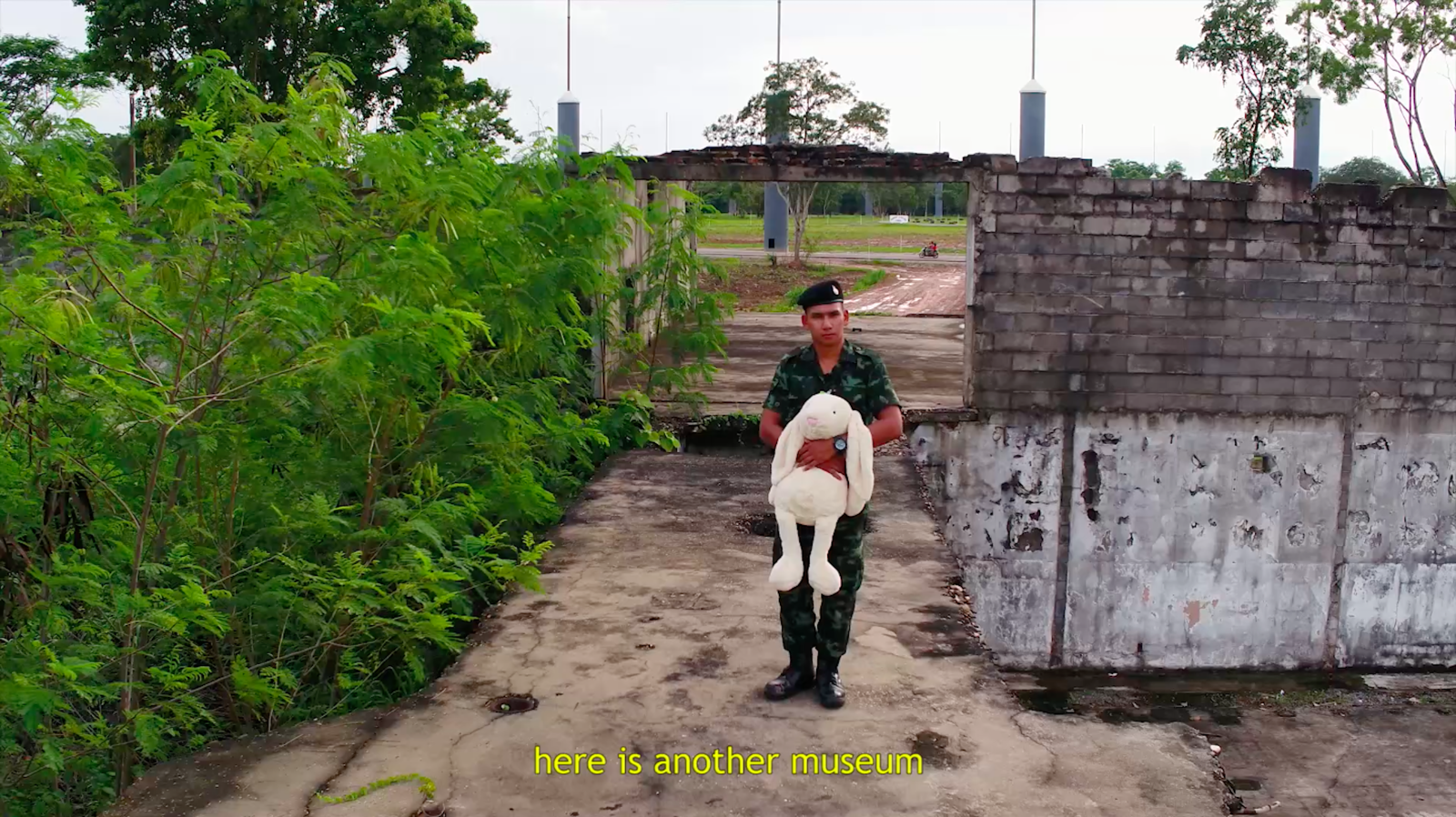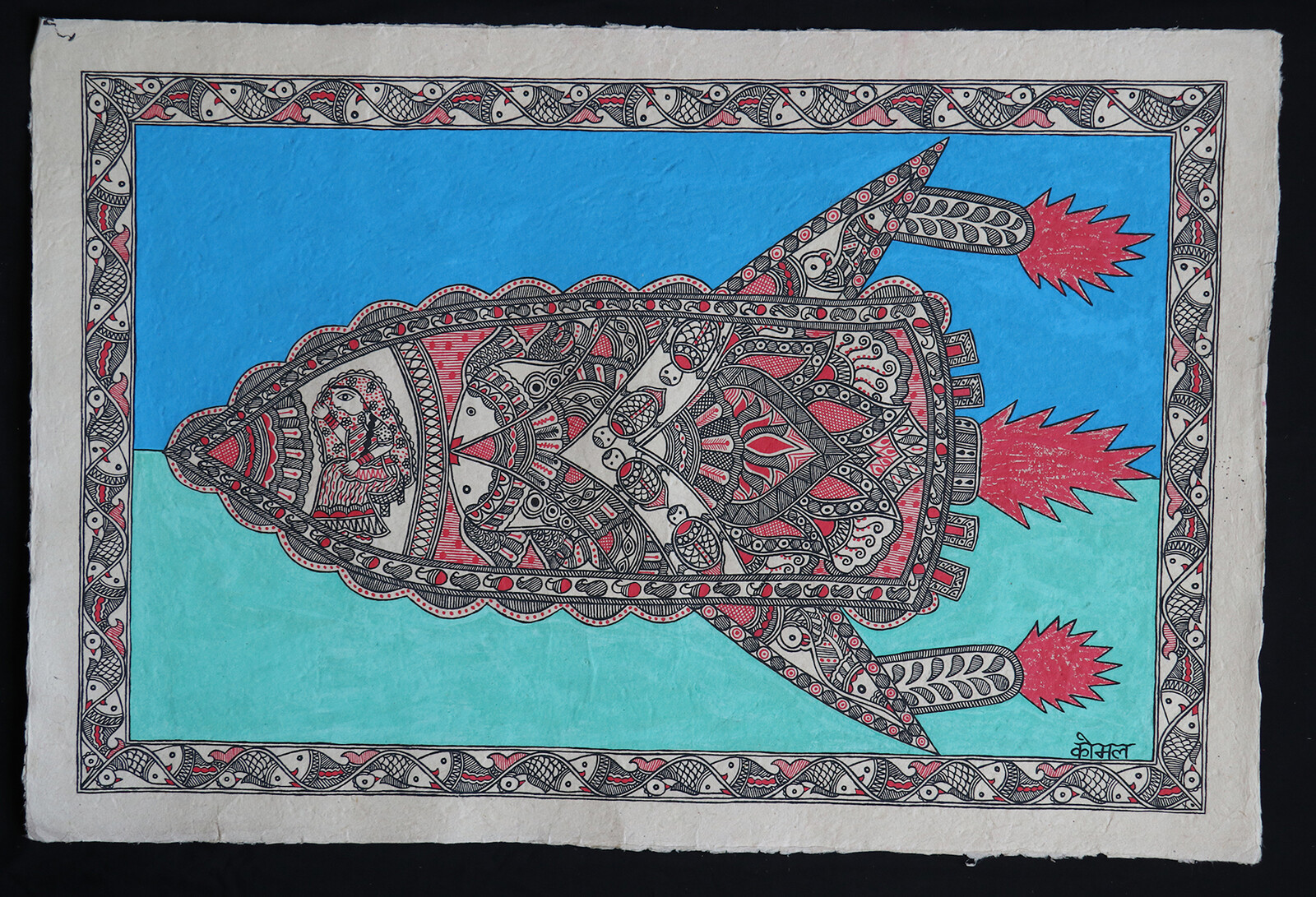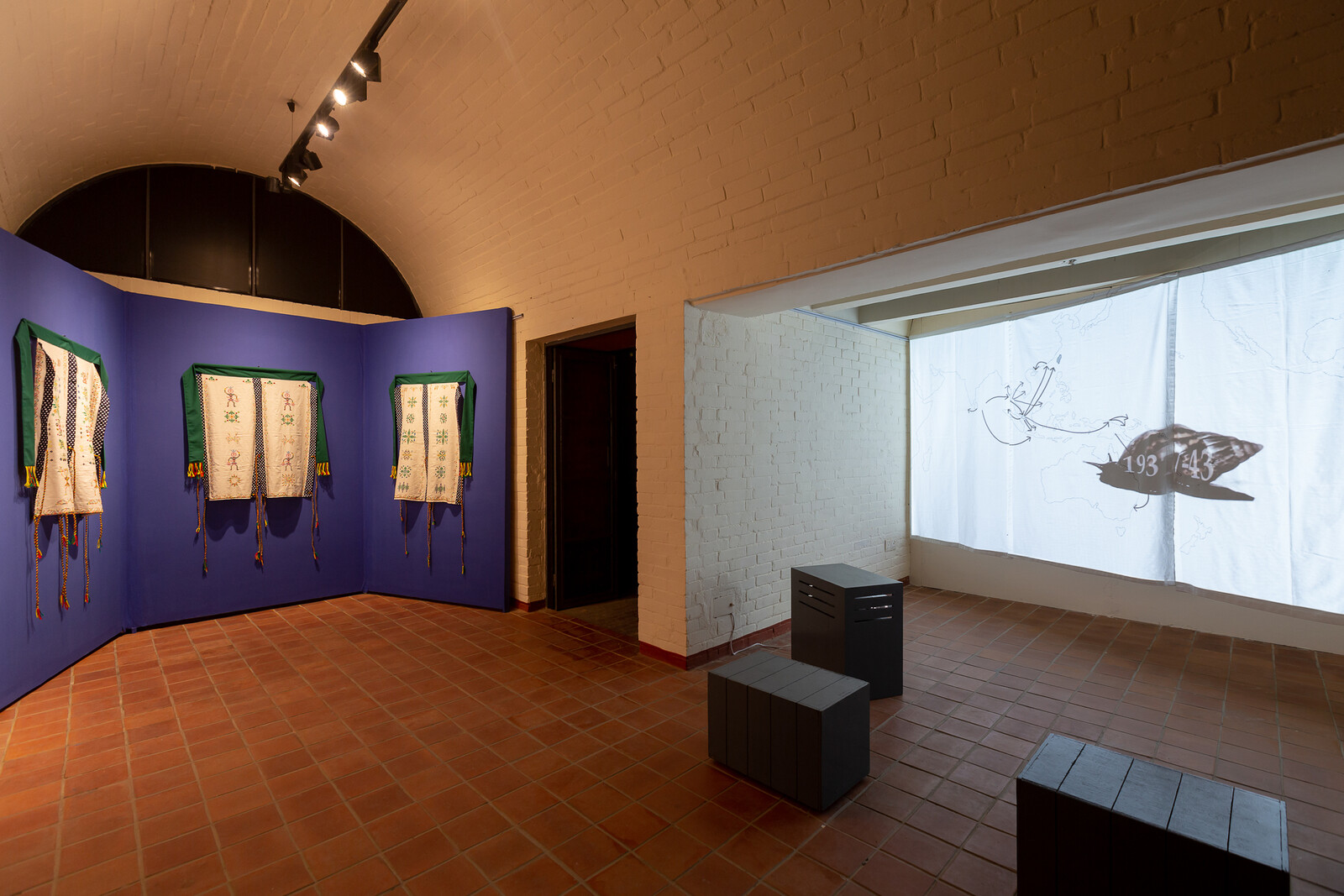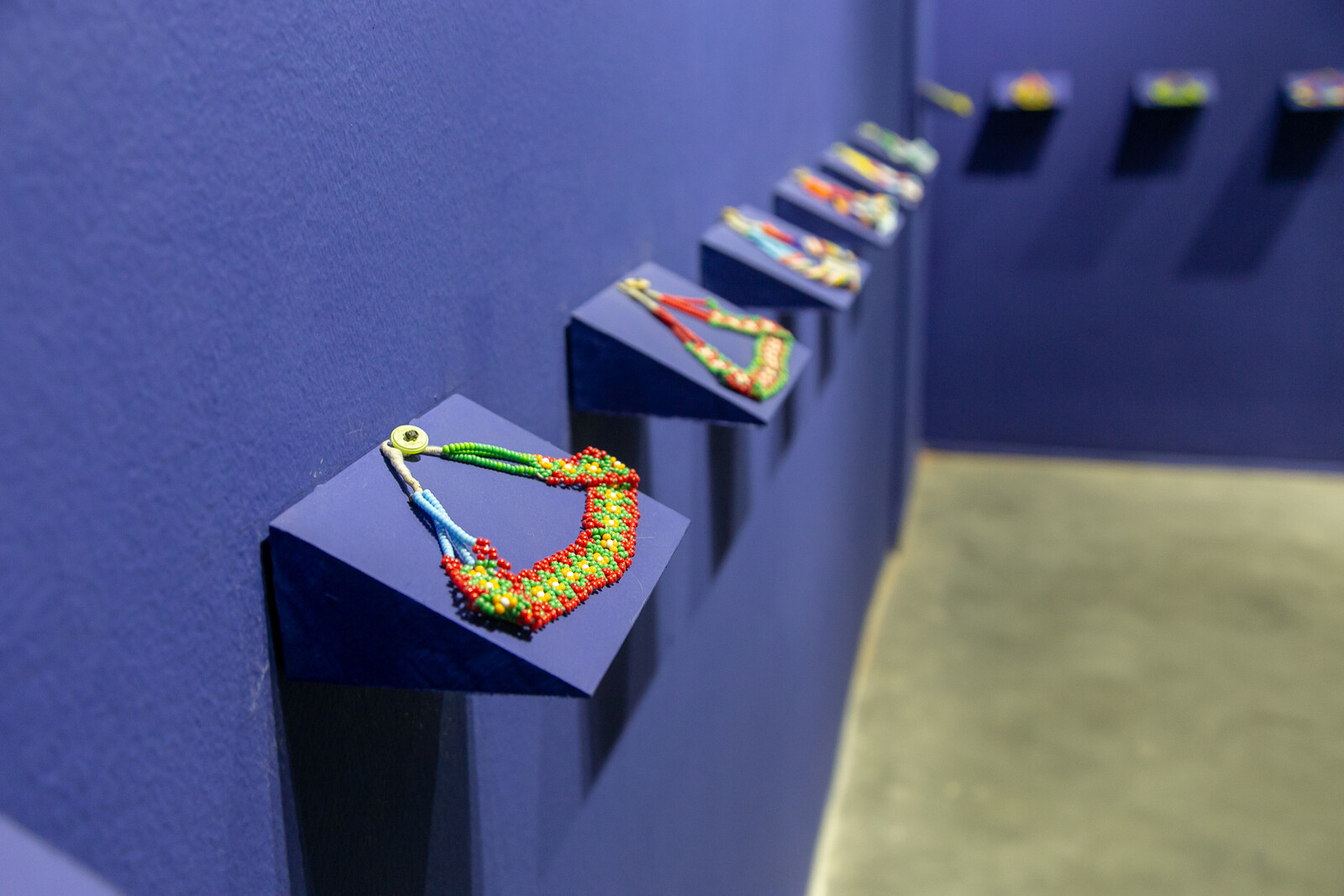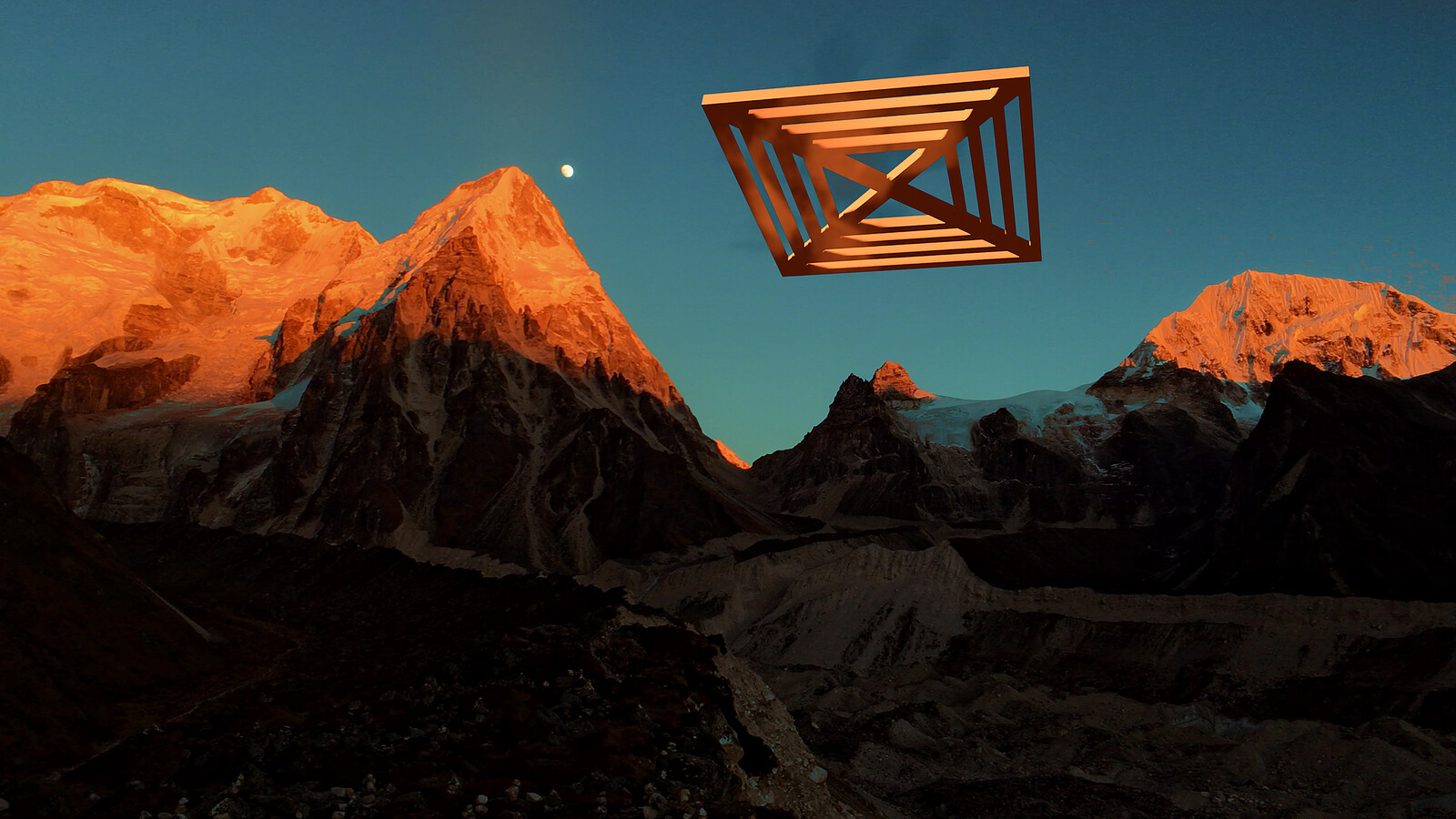February 11–March 31, 2022
Once upon a time, the Buddhist scripture Swayambhu Purana tells us, the Kathmandu Valley was an enormous lake filled with serpents. One folk legend describes lengthy negotiations with the king who displaced the serpents to other smaller lakes, to bring rain back to the dusty valley. Another describes the draining of the lake as an act of god, in which the Buddhist deity Manjushree took a sword to the lake and cut a gorge deep enough to drain the whole valley. Woodcut block prints on rice paper depicting serpents typically grace the heads of doorways, bidding safe passage to those who cross the threshold. One of these hangs in the Patan Museum next to No History in a Room Filled with People with Funny Names 5 (2018), a single-channel video by Korakrit Arunanondchai and Alex Gvojic featuring the performance artist boychild performing as the Thai serpent spirit Nāga, interspersed with news bulletins charting the 2018 rescue mission of 13 boys trapped in a flooded cave in Northern Thailand.
Kathmandu Triennale 2077 is dated according to the Nepali Bikram Sambat calendar system, which is set almost 57 years ahead of the Gregorian calendar. But the Triennale takes place neither in the Nepali year 2077 nor in the corresponding Gregorian year 2020, and is instead described by the curators as forming a “cemented, stagnant time and a fluid, unpredictable variant.” Led by artistic director Cosmin Costinas, and co-curated with artists and organizers Sheelasha Rajbhandari and Hit Man Gurung, Kathmandu Triennale 2077 is a worldbuilding project that enacts the complex entanglements of Indigeneity, caste, class, and power throughout the exhibition and its internal production structures. The exhibition, which features 100 artists across five venues, foregrounds practice over theme and challenges classical taxonomies of art. Textiles, video art, Mithila painting, contemporary Chinese ink, agricultural interventions, installation art, and more are given equal prominence—a form of poetic justice, marking an ambitious attempt to construct an alternative history emanating from the material conditions that structure Nepal today.
On May 1, 2004, Ashmina Ranjit covered her body in black ink and walked toward Singha Durbar, the seat of Nepal’s government, alongside more than 100 individuals dressed in black, who fell to the ground in pairs and in turn. This die-in was staged through complex negotiations with different communities. At the time, the street performance marked the climax of a decade-long conflict where disappearances became common, and is now memorialized through white-chalk body outlines leading to the entrance of the Nepal Art Council (NAC), as well as the photographic and aural documentation that forms Happening: Present Situation (2004). In the aorta of the space next to these chalk-outlines hangs a Mithila painting of acrylic on lokta paper. Komal Purbe’s A woman flying a rocket (2019) depicts a woman sitting in the nose of a rocket ship composed of turtles, birds, and fish. Aïsha Devi’s forceful score to Subash Thebe Limbu’s single-channel video Ningwasum (2021–21) floods the hallway. A form of Adivasi Futurism that Limbu has developed for many years, the cast of Subin Limbu and Shanta Nepali appear as time travelers from the future who communicate melancholic poetry via telepathy. Filmed mostly in the Himalayas, which includes the shamanic home of the Yakthung (Limbu) people, the mothership appears to us as futurist Indigenous technology modelled after a ritual object called Silam Sakma. The NAC is located near a slew of government ministries, spurring a dexterous curatorial consistency that articulates politics as a space of negotiation.
In the Patan Museum, one of the former royal palaces of the Malla Kings of Kathmandu Valley, master painter Lok Chitrakar’s work keeps the Paubha painterly tradition alive, both in his intricate Buddhist depictions and in his construction of painting as a healing practice. In Healing Lions (2018), we see photographs of two sacred lions drawn by Chitrakar around a shingle eruption on the skin, a healing technique typically reserved for Brahmin healers. Many artists shown here have adjusted traditional methodologies, shattering allegiances to predetermined forms of knowledge or knowledge production in order to reflect on the present. The Karnali Arts Centre transform the oral tradition from the Karnali region, which traditionally comprises song and dance of the Mahabharat epic, to speak instead to the discrimination faced by Dalits and the fraught relationship between rural communities and elected leaders. Their presence in NAC manifests in a single-channel video, Bharta (2019), along with a live performance which took place during the opening days of the Triennale.
At the Taragaon Museum, full-scale investigations into agricultural justice and gardening are launched. Perhaps most aligned with the Triennial’s precursor exhibition “Garden of Six Seasons,” at Para Site in Hong Kong, the works in this venue examine the human impulse toward tending and forming landscapes.1 Uriel Orlow’s Tori Bari (After Yellow) (2022) is a transplanted garden of oriental mustard with culinary and medicinal use, documented as early as 5,000 years ago, sown in the shape of a mustard mill from Khokana. Chang En-Man’s Snail Paradise: Preface (2019) is a mixed-media installation which includes three pairs of Pacavali men’s trousers cross-stitched with her own designs, showing the invasive species of the African giant snail, the plants it eats, and the paper mulberry tree—a symbol of the Austronesian peoples which was taken on early journeys through the archipelagos of the Asia-Pacific in order to be transplanted in new climes. At Kathmandu—a matrix of ethnicities, religions, and culture—this landmark triennial stages, and interrogates, human relationships both with the natural world and with sacred spaces of art. The vastly different timelines, processes, and perspectives on display sit together in intimate tension, forming what we might call a decolonial—rather than post-colonial—discourse. The triennial moves toward the possibility of another canon, asking us to look at our world from the perspective of a future, winning resistance.
“Garden of Six Seasons” was reviewed in art-agenda by Merve Bedir. https://www.art-agenda.com/criticism/337152/garden-of-six-seasons.

